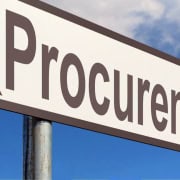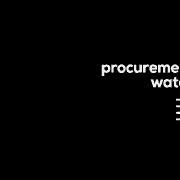|
Getting your Trinity Audio player ready...
|
By Richard Messick
First published on the Global Anticorruption Blog
No government activity is more susceptible to corruption than public procurement. The process by which government decides what to buy and from whom is lengthy, technically complex, and riddled with decision points that give procurement officers enormous discretion. Oversight is thus especially difficult. Moreover, because so much money is involved, the temptations procurement offers corrupt public servants and their private sector accomplices are particularly great. Some developed countries spend as much as one-third of their budget on the purchase of public works, goods, and services, and the available data suggests the figure may even be higher in developing countries.
With so much at risk, it is no wonder that there has been an explosion of material on fighting corruption in public procurement. The OECD, the World Bank, the European Union, and Transparency International have each issued a slew of publications on how to prevent corruption in public procurement, and Prof Matthew Stephenson of the Harvard Law School publishes a regularly updated anti-corruption bibliography, with dozens of articles, pamphlets, and books by academics, think tanks, and advocacy organisations on corruption in public procurement.
Indeed, the amount of material is so overwhelming that reporters, civil society groups, and even parliamentarians and government auditors may be discouraged from pursuing allegations of procurement corruption. For how does one know where to start?
Below are 10 simple, straightforward questions that provide a starting point. They can be asked about any government purchase: from ‘off-the-shelf’ items like pencils and paper to a new road or bridge to the acquisition of customised IT systems. The answers will provide a telling first indication of whether the procurement merits further scrutiny.
1) Was a cost-benefit analysis of the procurement prepared? No individual or firm rushes out to buy a product or service without considering whether there is a need and whether there are alternatives available. Likewise, no government should commit public funds before determining if on balance the purchase is worthwhile. While for lower value, simple purchases, a short memo or spread sheet analysis will suffice, for larger more complex projects a full-blown cost-benefit analysis should exist that considers different ways to accomplish the project’s goals. If the goal is to reduce the costs of transporting goods between point A and point B, did planners analyse the costs of: i) improving the existing road, ii) constructing a new one; or iii) building a rail line between the two? If the project was chosen because of corruption, likely either no analysis was done or it was an after-the-fact justification that will be easy to see through.
2) Was the purchase put out for competitive bid? Competition is the surest way to ensure government gets the best product at the lowest price, and the UN model procurement law, the basis of virtually every national procurement statute now in force, makes competition the default option for government purchases. There will be times when an exception is appropriate: a national emergency, the existence of only one supplier who can meet the terms of reference. But anytime competition is bypassed, the procurement merits heightened scrutiny.
3) How long were potential bidders given to prepare their bids? Where the supplier is chosen by competition, the firms competing for the contract should be given sufficient time to prepare their tenders. The length will depend upon a variety of factor: the complexity of the procurement, the extent of subcontracting anticipated, and the time needed for transmitting tenders. Nigerian law provides a minimum of six weeks for large construction projects, and for World Bank-financed consultancy contracts consulting firms must be given at least 14 days to submit an expression of interest. If the time to prepare the bid is too short, qualified firms will either decline to participate or will be unable to prepare a quality response. At the same time, the corrupt firm will likely be given a copy of the tender long before it is made public, giving it plenty of time to develop a responsive bid.
4) Was the request for bids advertised? For a competitive tender to produce the best product at the lowest price, the request for bids or tenders (the terms are frequently used interchangeably) must be widely disseminated, not just e-mailed to a few cronies. That will ensure all firms that might be able to meet the government’s needs have a chance to respond. A notice should appear in at least one national newspaper with a large circulation, and for contracts for large public works and other purchases where foreign firms are potential suppliers, at least one major international publication as well.
5) Were the bids screened for signs of collusion? As I explain here, a variety of methods are available for analysing whether the bids show signs two or more bidders agreed with one another on the amount of the bid each would submit. A screen should be employed before the winning bidder is selected, but it can also be used after as well and certainly should be on large public works projects where collusion is particularly common.
6) Did those on the committee that evaluated the bids submit a statement disclosing their financial interests? One way corruption can creep into the procurement process is when one or more of those evaluating the bids has a financial interest in one of the bidders. Submission of a financial disclosure statement (that is then verified) is an important preventive measure. The EU anti-fraud office has a fine example of a model disclosure form that covers the interests that evaluators should be required to reveal.
7) Who is the beneficial owner or owners of the winning bidder? A recent investigation in the Solomon Islands revealed what is all too common in many countries: the senior civil servant responsible for approving procurement contracts secretly owned a company that was awarded a number of contracts. The firm winning the bid should be required to disclose the name of any individual who owns or controls 5% or more of the firm. The disclosure should be verified.
8) Does the request for bids contain an audit clause? An audit, conducted before or after the contract is awarded, is a powerful tool for uncovering wrongdoing, from bid rigging through false or inflated invoices to the delivery of substandard equipment or material. Failure to include one in the bid documents and resulting contract not only makes it very difficult to investigate corruption allegations but may suggest that those preparing the bid documents or the contract are a party to corruption. The World Bank requires a provision be inserted in works contracts it finances giving it the right “to inspect [bidders] accounts and records and other documents relating to the bid submission and contract performance.”
9) How many technical audits will be conducted during contract implementation? For contracts for roads, bridges, IT systems, and other purchases that require months, if not years, to complete, it is essential that the contractor be regularly audited to ensure the work meets the specifications in the contract. Once the road is built it can be very hard to determine if the subsurface is as deep as it should be. With a technical audit an independent engineer or other professional inspects the job while it is under construction. Do the layers beneath the surface of the road contain the amount of asphalt and the size of aggregate specified in the contract? Does the IT system have the security features the contract requires to prevent hacking? A leading authority on corruption in public works, engineer A.L.M. Ameer, recommends that in construction projects government spend $1 for every $1 000 budgeted for construction on technical audits.
10) Does the winning bidder have an ethics or anti-corruption compliance programme? It makes sense in today’s environment that companies instil a sense of ethics in their employees, and many countries require companies doing business with them or subject to their jurisdiction to have a programme in place to prevent their employees from paying bribes. There is now an international standard against which to measure such programmes. Does the winning bidder have any such programme, and if not, why not?
The ways in which corruption can sneak into procurement are limited only by the imaginations of greedy, crooked public servants and their cronies in the private sector, and the only way to be sure it is kept at bay is to build a professional, honest corps of public procurement professionals. In the meantime, ‘wrong’ answers to the questions above are likely to expose the more egregious procurement corruption schemes.







